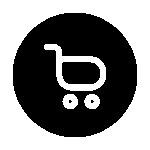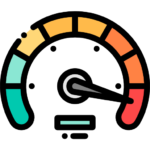Ignite Your Creative Spark: Exploring the Latest UX/UI Trends for 2023 – Kinematic Digital
As a design team, we are always thinking of ways to make our work experience more fulfilling. One way we do that is by exploring new design trends and how they’ll affect user experience in the next few years.
In this blog, we’re covering two trends for design in the year 2023 — UX design and UI design trends — that’ll help you get a glimpse of the future. The world of design is constantly evolving, and knowing what will come in the future is a great way to stay ahead of the game. Read on to find out how you can use these design trends to improve your user experience in the year 2023.
Top UI Design Trends of 2023
By 2023, companies will be spending a significant amount of money on UI design. As a result, we’re likely to see a rise in trends such as accessibility, augmented reality, and the design process. Companies are focusing on details and how small elements can draw visitors in. This means personalization will also become increasingly important—companies will strive to make their products or services more relevant to their target audience. Another trend to watch for is user experience and interface choices that match the target audience’s needs. For example, retailers may want a checkout page that is easy to navigate and understand, while e-commerce platforms may favor a design with fewer clicks and extra features.
Another trend to watch for is microinteractions, which are small touches that provide a sense of connection or belonging between a person and a digital experience. Personalization also won’t go unnoticed—companies will focus on creating products or experiences that are customized for each individual customer. Finally, handmade graphics, such as illustrations drawn by hand instead of typing on a computer screen, will continue to gain popularity among UX and UI designers.
Top UX Design Trends of 2023
In 2023, large font sizes and immersive experiences are key trends in UX design for top brands. This is as seen on the websites of Apple, Microsoft, Toyota, Tesla, and McDonald’s—all of which have embraced these design trends with aplomb. The trend for personalization is expected to be a big one in 2023. This year, digital tools will be able to personalize experiences based on a user’s preferences and past interactions. In addition to this, dark and anti-light modes will continue to be popular as they create a sense of depth and dimension within a design. Moreover, increased accessibility is also expected to become a key design trend in 2023. This year, more digital devices will be designed with accessibility features such as larger fonts and simpler interfaces. Handmade graphics will also continue to gain popularity among designers. This year, biometric access is likely to become a popular design trend among digital products. Finally, mobile-first design is another design trend that we can expect in 2023. With mobile devices becoming more capable and powerful, it is important for digital products to be designed for mobile devices first
1. Large font size and immersive experience
Large fonts are making a comeback in user experience design for 2023. The trend of big-font design is driven by a wide variety of factors, including the proliferation of large-screen devices and a growing trend toward immersive experiences. Bigger fonts help to make content more readable and are also a useful way to convey a message with impact. Capitalized typography is being used to grab user attention, while bold typography is used to emphasize certain words or draw user attention. Combining typefaces and styles is another popular approach that can help highlight important information in a user interface.
Accessibility is also becoming a legal requirement, so it’s important for user experience design teams to ensure design elements are accessible to people with disabilities. By 2023, it’s likely we will see larger fonts and immersive experiences continue to shape the future of user experience design.
2. No more parallax scrolling
Parallax scrolling is a design trend that was popular in the early years of digital design. However, it has become a bit passé in recent years, and many websites have already stopped using it by 2023. Instead, many sites use an alternative method to create visual interest on a webpage without using parallax scrolling.
Today, designers must look for other ways to create visual interest on a webpage without relying on parallax scrolling. This trend will continue in the coming years as designers seek new and innovative ways to design user interface (UI) elements.
3. Generative AI in the design process
Generative AI is a type of Artificial Intelligence (AI) that is used to create new content. It has quickly become a part of design processes, allowing designers to generate designs without needing to start from scratch. Generative AI technology is used in many design tools, such as Adobe Photoshop, Illustrator, and the Global Edit tool. It can be used to generate design assets, such as color palettes for projects. Generative AI is also used in design process to generate design elements, such as websites and apps. This software can be used to generate a website color palette and remove elements from a design’s background.
Output: Generative AI has revolutionized the design process by allowing designers to create unique work without needing to start from scratch. It has become an essential tool for creating visually engaging and unique designs. Nowadays, it is common to use generative AI in many design tools, such as Photoshop, Illustrator, and the Global Edit tool. This software can be used to create a website color palette or remove elements of a design’s background. It allows designers to easily adjust the look of their interface without having to start from scratch.
4. Make full use of the card UI component
In 2023, design trends suggest a continued use of the card component in user interface design. The card component can be used to provide a flexible way to organize information on the interface. It provides usability benefits, such as improved user experience and effective organization of information. Additionally, card components are commonly designed using a visual language that is consistent across various devices and interfaces, making them a versatile choice for user interface design.
To get ideas or tips for card design, designers can search for card components on Dribble or simply browse other brands’ design systems. These examples show a diverse range of design systems that use the card component in their interfaces. This trend shows a continued focus on user-friendly interfaces in future design trends.
5. Light mode with an option for dark mode
In 2023, design trends will continue to focus on user experience design, with a growing trend of incorporating dark mode in user interfaces. Both Apple and Google are exploring the possibility of introducing a dark mode, which would allow users to switch between light and dark interface settings. In order to ensure usability and accessibility, designers must prioritize readability and contrast when incorporating dark UI into a user interface. Dark mode is a popular UX design trend in 2023 as it reduces eye strain and screen glare, making it easier on the user’s eyes. Additionally, motion design, mixed reality, and augmented reality are also popular design trends for the coming years. Personalization is key when it comes to light vs dark mode; users should have the option to switch between these settings to suit their personal preference.
6. How we build vs What we build
By 2023, design to code platforms such as Wix Editor X and Anima will reframe UX designer deliverables. As a result, design professionals will be able to create consistent but personalized designs for a user, catering to their preferences.
In addition, design to code platforms will make it easier for designers to participate directly in the production process by defining design tokens and elements such as device breakpoint, spacing, styling, etc. As a legal requirement, accessibility will become a trend in design work. Accessibility experts will likely play a critical role in the design process, helping designers incorporate accessibility considerations into their work. For example, accessibility experts may help designers ensure that their designs are fully accessible for everyone who may use them. Output: Designers must be demanding in their deliverable as the availability of design to code platforms makes it easier for them to create consistent but personalized designs for each user. Designers must also contribute directly to production by defining design tokens and elements such as device breakpoint, spacing, styling, etc. This demand-driven process requires designers to be more involved with the design process and always think about accessibility when creating digital products.
7. Mass migration from Adobe XD to Figma
In 2018, a mass migration from Adobe XD to Figma was seen as a result of the $20 billion takeover of Figma by Adobe. This mass migration saw a large number of users migrating from Adobe XD to Figma in an attempt to take advantage of its collaborative features and browser-based interface.
As a result of this mass migration, several factors led to a significant increase in user retention and engagement with Figma. For example, Figma’s collaborative features make it a more attractive option for Adobe XD users seeking to share designs or receive feedback easily. Additionally, Adobe slashed investment in Adobe XD and is likely to phase it out eventually, making it more challenging for users to maintain long-term user engagement with the software. As a result, many established XD users are moving over to Figma in 2023. Overall, the Oracle engaging with user needs and wants is vital for ensuring success in digital design tools.
Want your site to offer a seamless, beautiful user experience?
Users want a seamless, beautiful experience online that is personal to them. This demand has led to a proliferation of user-friendly design trends in the next few years. Some of the top trends include increased accessibility, personalized experiences, and anti-light and dark modes. Other trends include microinteractions, cross-device usability, and cursor design. As customers increasingly interact with companies online through their platforms, companies must design those experiences with a focus on the target market. This can be accomplished by using different user interface designs for different devices or using custom graphics instead of generic ones.
Besides designing user interfaces that are tailored to specific user groups, it’s also critical to make usability a priority in any design process. For example, a good design process includes usability tests where users test a design scenario before implementing it into production. These tests help ensure a design will work as intended and may reveal usability issues such as an inefficient form or layout that can be easily fixed before implementation. Overall, user experience design trends are focused on creating intuitive and engaging digital experiences for users worldwide.
Mobile-first design
– In 2023, mobile-first design is expected to become more prominent. As more people access the internet from mobile devices, it is no longer a luxury but a necessity.
– With a rapidly increasing user base of mobile internet users, mobile-first design has gained popularity. This design approach prioritizes simplicity and convenience over features, so that users can have a seamless experience across various devices.
– The goal of mobile-first design is to consider mobile users in the first phases of design, with the product or service being developed for desktop use later on. However, it is important to note that not all products or services designed for desktop use can be adapted for mobile use so easily.
– In Q1 2022, over 90% of users accessed the internet from mobile devices, compared to 60% from laptops or desktops. It is evident that mobile-first design has become a trend among internet users.
Inclusive and accessible design
Inclusive and accessible design is a focus for user experience (UX) and user interface design in 2023. The European Union member countries have implemented the European Accessibility Act as a legal requirement in 2020, which will ensure digital tools and services are designed with accessibility in mind. This law is a step toward making digital devices, software, and services more accessible to all users.
A great example of inclusive design is the web-based Google Inclusive Design Framework. This framework outlines best practices for creating websites that are easy for all users to access and use, regardless of their physical or mental abilities or disabilities. In addition, companies are increasingly relying on UX and UI strategies to help increase view and market share rates. For instance, they’re developing products that are easy to use, intuitive, engaging, and memorable.
Metaverse and Web3
The metaverse, a term used to describe a virtual environment, is a digital universe that is evolving exponentially. The metaverse is a concept that has been around for a while now and it is gaining traction among design teams as they shift focus from 2-D to more immersive 3-D experiences.
Virtual user experience designer (UX designer) is becoming a specialist role in 2023 as the VR and AR-enabled metaverse and Web3 worlds edge closer to becoming a normal reality. The metaverse will allow users to experience real-time interactions with each other in a virtual space, which opens up new design possibilities.
Web3 focuses on creating content and bolstering cybersecurity, making information exchange easier between web users. An example of using virtual reality in user experience design is a website created for Douyin Auto Carnival in China. This particular website allowed users to experience an immersive car race through VR devices such as the Oculus Rift or HTC Vive. This helped them get an accurate feel of what it would be like to be a part of this huge event.
UX writing and “scrollytelling”
– UX writing is the process of writing user experience design documentation that is understandable by humans and can be easily adapted to different contexts.
– “Scrollytelling” is a form of storytelling that uses scrolling content to show how a user’s journey unfolds over time.
– One trend in UX writing and ‘scrollytelling’ will be the use of interactive maps and illustrations. This trend will continue to appeal to creative writers looking for ways to grab attention with dynamic visuals.
– Another trend in UX writing and ‘scrollytelling’ will be the incorporation of AR/VR elements into websites and applications. This trend will appeal to those looking for unique ways to add a layer of immersive experience to their work.
– Other trends in UX writing and ‘scrollytelling’ include the use of voice technology and gamification elements in design documents. This trend will continue as a popular way to engage audiences with engaging, interactive experiences.
AR, VR & 3D elements
– AR and VR technologies are becoming increasingly popular as a way to enhance user experiences.
– These technologies can be used to create unique and immersive experiences for customers, a experience that is beyond the limits of traditional technology.
– While design is important in any tech innovation, it’s vital to consider how these technologies can be used to enhance user experiences.
– The interface design of AR/VR must be seamless and highly interactive, providing a truly immersive experience.
– It’s important that designers consider all factors when developing interfaces for AR/Vr, including hardware limitations and user experience.
– AR enhances real-world scenes with graphics, sound, and other inputs, while VR creates a computer-generated simulation of an environment. UX/UI designers can utilize this technology to develop stunning websites and applications.
Get experimenting and experiencing
-As a design professional, the experience you create for a user is critical. Experiences create memorable interactions that drive users to take action and can help evoke a positive emotional response in your audience.
-Emotive design focuses on evoking an emotional response from users, and seeks to make a user experience as enjoyable as possible. It is used to connect with a user on a deeper level and transform an ordinary interface into a delightful experience.
-Positive experiences create a deep connection with a product, increasing user engagement, and can be created by designing for gratitude or joy. This approach encourages users to return to a product again and again, creating a sense of loyalty and satisfaction.
– Another way to add meaning to your design is through experimentation. By involving users in the creative process, you can spark creative ideas and solutions that can lead to positive experiences and desired outcomes.
With so much innovation happening across industries and sectors, it’s vital for designers to stay up-to-date on the latest trends in UX/UI design. By experimenting with these techniques, you can create dynamic and exciting experiences that capture attention and foster engagement with your audience.
Conclusion
One trend that is definitely here to stay is a mobile-first design, which emphasizes user experience above all else. With a user-centered design process and accessibility for design team members, companies can ensure that their user experience matches their design standards. Also, metaverse and web3 will continue to be used as design tools to create a seamless user experience. We hope you’ve got a better understanding of design trends for the year 2023. Get in touch with us for a demo and design workshop so that you can take your design skills to the next level!












